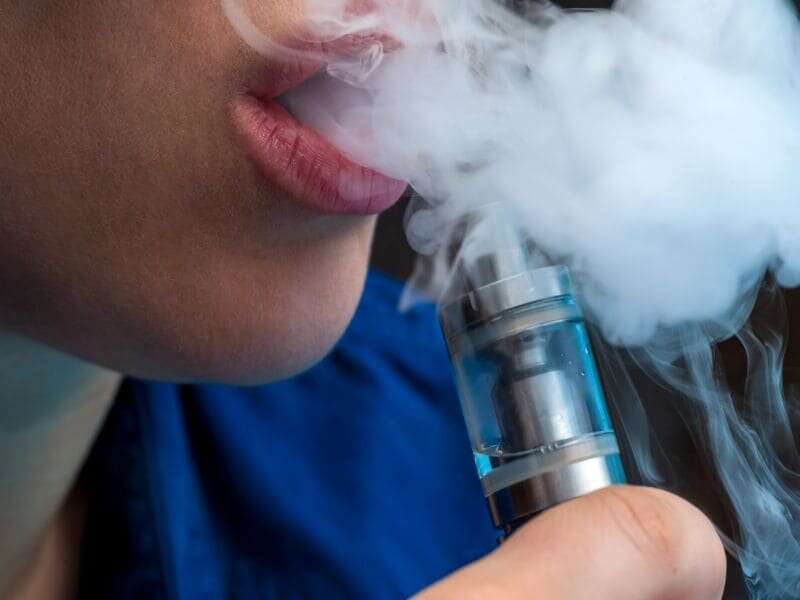As the Facilities Manager for a major university here in Arizona, I’ve seen all kinds of challenges over the years—plumbing issues, HVAC overhauls, even managing large-scale renovations. But one of the more unique challenges I’ve faced recently has to do with something less visible: air quality. Specifically, we’ve had an increasing problem with students vaping and using marijuana in campus restrooms. The issue became so widespread that we were tasked with finding and implementing a reliable detection system to discourage and reduce this behavior across campus.
The Growing Concern Around Vaping on Campus
Vaping and marijuana use among students is nothing new, but what’s changed is the extent to which it’s impacting our facilities. Our public restrooms were becoming hotspots for vaping—not just figuratively but literally. The tell-tale fog, the lingering odor, and the student complaints were piling up. Worse yet, our custodial teams were regularly encountering the mess left behind.
From a facilities management perspective, this wasn’t just a behavioral issue; it became an air quality and safety concern. Vaping indoors can trigger fire alarms, degrade air filters faster, and impact the performance of sensitive HVAC systems. Moreover, when marijuana enters the equation, it brings with it legal and disciplinary implications that our university must be prepared to handle.
The Challenge of Finding the Right System
Initially, we tried using basic smoke detectors and even looked at repurposing security cameras to monitor entrances and exits. But none of these tools addressed the actual issue. We needed a system that could:
- Detect vape aerosol and THC particles accurately
- Distinguish between vaping, smoking, and normal steam or humidity
- Work in restrooms without compromising student privacy
- Integrate with our existing security and alert systems
That’s when we began looking into specialized air quality detection systems, particularly those tailored to environments like ours. The solution we eventually found effective was the HALO Smart Sensor, which offered not only the vape and THC detection we needed, but a suite of environmental monitoring tools we didn’t even realize we needed at first.
Why HALO IoT Smart Sensor Made the Cut
The HALO Smart Sensor is designed for privacy-sensitive areas like restrooms and dormitories because it does not use cameras or record audio. Instead, it uses a series of sensors to detect changes in air composition, temperature, humidity, and more. Here’s why it stood out:
- Vape and THC Detection: HALO is equipped with sensors specifically calibrated to detect the chemical signatures of nicotine and THC. It can distinguish these substances from harmless aerosols like steam, which significantly reduces false alarms.
- Privacy First: Unlike traditional surveillance tools, the HALO sensor collects environmental data without invading privacy. This was critical for us in maintaining student trust and complying with privacy regulations.
- Real-Time Alerts: The system integrates seamlessly with our campus-wide security network, allowing us to receive real-time alerts when a vaping or smoking event is detected. These alerts include time stamps and location details, which help us respond quickly and accurately.
- Air Quality Monitoring: Beyond vape detection, HALO provides detailed metrics on CO2 levels, particulate matter (PM1, PM2.5, PM10), humidity, and temperature. This is invaluable in restrooms and other enclosed spaces where ventilation may be inadequate.
- Tamper and Occupancy Detection: Another unexpected benefit has been HALO’s tamper detection features. It can detect when someone attempts to cover or disable the unit. It can also be configured to sense occupancy levels, which adds a layer of safety in emergency scenarios.
Implementation and Rollout
Rolling out the sensors wasn’t just a matter of screwing them into the ceiling. We had to work closely with IT, campus security, and the administration to ensure everything was compliant and functional.
- Site Evaluation: We began by evaluating the most problematic restrooms across campus—typically those in high-traffic academic buildings and dormitories.
- Network Integration: Our IT team ensured that each HALO device was connected securely to our campus network, allowing data to be logged and alerts to be sent instantly to designated personnel.
- Training and Policy: Staff were trained on interpreting the alerts and responding appropriately. We also developed clear policies outlining how information would be used, including disciplinary protocols for repeat offenders.
- Communication with Students: Transparency was important. We posted signage and sent out university-wide communications letting students know that vape detection systems were in place and being actively monitored.
Early Results and Feedback
Since installing the HALO sensors, we’ve already seen a significant reduction in restroom vaping incidents. Word travels fast on campus, and once students realized that vape use could be reliably detected—even without smoke or smell—they thought twice.
Maintenance staff have reported cleaner facilities, and campus security has fewer anonymous complaints to investigate. Most importantly, we now have data. Real, actionable data about when and where issues are occurring, which helps us allocate resources more efficiently.
While vape detection was our initial goal, the broader capabilities of the HALO IoT Smart Sensor have opened new possibilities. We’re now evaluating its use in server rooms to monitor temperature and air quality, and in labs to detect chemical exposure risks. Its modular platform means we can expand its capabilities as needed.
For other universities considering similar implementations, I’d stress the importance of choosing a system that balances performance with privacy, integrates easily with your existing infrastructure, and provides data that’s actually useful. The HALO Smart Sensor hit all those marks for us.
In an era where health, safety, and accountability are more important than ever, having a reliable, non-invasive detection system gives us peace of mind—and gives our students a better, cleaner, and safer environment to learn in.
I’d love to know about your thoughts and your experiences with these issues. Please message or leave a comment.





























